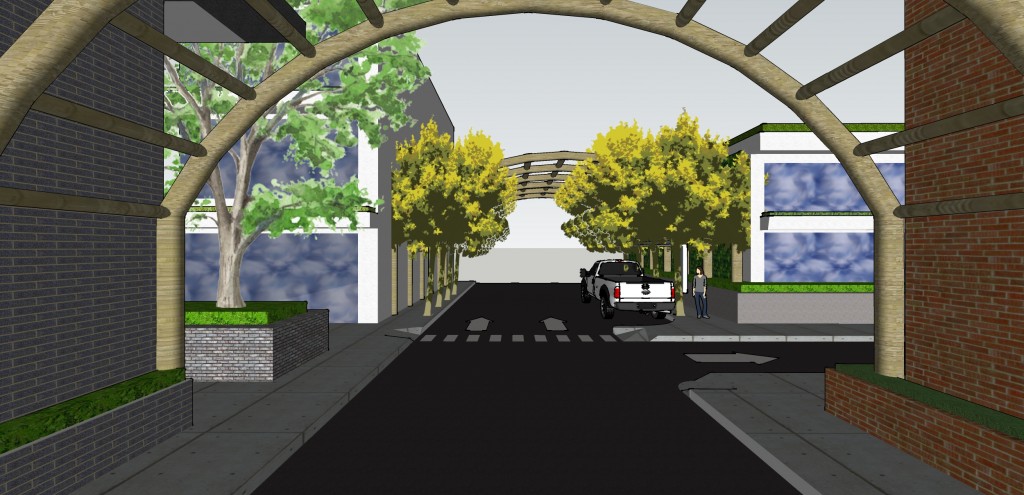There is something to be said about the sustainability of city living. When you think of sustainable agriculture or feeding yourself off the land you likely picture a large homestead in a rural area. At least that’s what I hear most often from folks in the US. Our cities are somehow never imagined to be a place where we can live sustainably. And why? After all the density of urban areas can lower energy demand and greater access to a wider range of foods. Not only that but the closer access to goods such as clothing, smaller homes, and a wide range of other benefits make city living a model for potential sustainability.
Feed the City
We need to change how we currently feed the city to make them more sustainable. The city I live in, Pittsburgh, Pennsylvania, has in it 300,000 people (give or take a few thousand) and while we have an amazing market area – a hub – for produce, meats, dairy products, and event flowers in the Strip District much of that food is brought in from far away places. That means that we are food importers and as such, if those trains and trucks stopped tomorrow we’d be screwed. Our lovely market neighborhood would be worthless and we would starve. Please read that again because it’s a fact that is easy to understand but not one that people give much thought to. If we’re going to have sustainable cities we need to turn them into food producers.
Feed Yourself
How often do you worry about what to do if you couldn’t feed yourself from your usual sources? I think about that quite a bit. If it were not for someone else bringing it to us, we would have no food. None. That isn’t just a sustainability issue, it’s a safety issue.
It doesn’t matter how much money you make, you would starve. That is unless you have a large enough garden and the know-how to feed yourself. Some readers of the above thought experiment might also point out that you’d also have to be able to defend yourself from those that don’t have trying to steal your bounty but that’s a topic for another day. For now just focus on the fact that nearly all of us don’t and many of us can’t feed ourselves and that probably includes you dear reader.
See we need a certain amount of space to grow enough food to sustain us. The average (healthy) diet is north of 2,000 calories a day. To get even that from an average city lot would be very difficult so we need some help. You might start to think about how urban farms and near-city farms can solve the problem and while that’s true to some extent it won’t solve the problem totally since most of us like exotic foods and even more of us like pre-processed industrial food-stuff that requires incredible amounts of energy to produce and even more to haul around from farm to factory to warehouse to grocery store and so on.
Feed the World
John Jeavons and his followers claim that you can feed 1 person on just under an acre of land (about 4,000 sq. feet). That’s good but not great. The average lot size in Pittsburgh is around a quarter of that figure. When you take apartment living into account the average person would be lucky to be able to provide 10% of their own food. Even if they use John’s methods or other forms of permaculture. We just can’t feed ourselves everything we need on one city lot. If we’re only thinking of ourselves we’ll never be able to realize the full potential of sustainable city living.
So what do we do? People are developing vertical farming methods and hopefully those could find a place in large city growing projects. We need to think communally. Small neighborhood shares of open land are helpful for seasonal growing but they, like vertical farming, don’t provide staple crops like rice, wheat, and corn. The closest they get is potatoes.
Hit the Road
We could all go back to rural living but it’s unlikely that that will happen and besides there are still too many of us for this to be a viable option. We need a way to live in cities or other such communities that will allow us to invent and create and socialize and do all the other amazing things that cities allow us to do but we need to do all those things while finding a way to feed ourselves. So we can hit the road or we can apply permaculture design principals to our streets.
Growing Over the Road
Pittsburgh is an older city (for the US) and many of our streets have 9 foot lanes. We have 1,200 miles of roads inside of the city of Pittsburgh. If we could place arbors and/or fruit and nut trees along all of those roads we’d gather enough food for nearly 25,000 people. Though it wouldn’t be a diverse diet if we could harvest fruit and nuts along with other companion plants from even half of those roads we’d have gone a long way to establishing sustainability as a city. Many city gardeners can’t plant these types of trees in their yards because they’d take up too much space but by growing fruits and nuts over our roads residents without the room to grow these trees themselves could buy these fruits for less than what a grocery store sells them for.
 We would reduce our need on shipping these goods to us and could set up public-private partnerships to harvest them. We would need to design the system in a way that the fruit, nuts, and leaf debris does not create a hazard for drivers but the system would also benefit these folks. It would clean their emissions, keep their cars cooler (if deployed over parking spaces) and keep the sun out of their eyes.
We would reduce our need on shipping these goods to us and could set up public-private partnerships to harvest them. We would need to design the system in a way that the fruit, nuts, and leaf debris does not create a hazard for drivers but the system would also benefit these folks. It would clean their emissions, keep their cars cooler (if deployed over parking spaces) and keep the sun out of their eyes.
If we built arbors or other large structures above the road these could be used to support trees and nets to catch their fruit. They also could hold street lamps for night driving and for when the foliage above is too dense and extra light is needed underneath. These lights could even feature small solar panels that share the canopy with the trees and collecting the power they need to run all night.
Fruit and nut trees are not the only items that could be grown on or even in these arches. Planters could be hung in them that grow a wide variety of fruit and/or vegetables. If we combine such techniques with green roofs, large urban greenhouses, and small neighborhood plots we really can create sustainable cities. If we were to mandate any new building be built with a green roof and employ processes described in books such as A Patterned Language we could easily feed ourselves and while we might not be 100% individually food independent we would be relying on our neighbors and not a faceless multinational corporation.
























You must be logged in to post a comment.